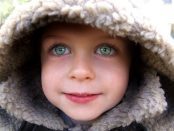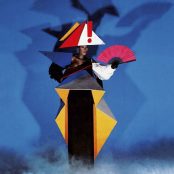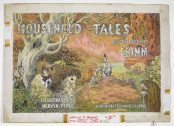Michael Faraday thought that the most beautiful thing in the world is a soap bubble.
One of the very very least beautiful things in the world is an economic bubble, and probably its least beautiful subset is a bubble in the art market. The only thing they share with soap bubbles is the fact that they all burst eventually. The beginning of the 21st century has witnessed an art bubble made more grandiose in its banality by decades of ‘globalisation’ and by computerisation. We have lived through a hotch-potch of manias, Ponzi schemes, pyramid schemes, unbelievable global polarisations of wealth and conspicuous consumption in the art world that would have made even Thorstein Veblen choke on his cornflakes.
As with all bubbles in human history, from the South Sea bubble in the eighteenth century to the Dutch tulip craze in the seventeenth, perception and realities have overlapped in a cankered ‘danse macabre’ so that artefacts and creations of the least value and substance in terms of both technique and depth of underlying ideas have been valorised at the highest levels within the markets. In contrast, the greatest work of our times has almost all been marginalised or suffocated before it could be made because its creators and potential creators have been forced into positions of relative isolation and penury.
In times of bubbles, all is inverted and perverted.
This process is a vicious spiral so that over time if people who have been intoxicated on bubble tea are presented with the authentic and the real they will not even recognise it because they are so used to the inauthentic and the ersatz, to the derivative and to pieces of work devoid of what Walter Benjamin called the aura of the products of the highest craftsmanship.
George Soros has created the concept of reflexivity to describe the process of feedback and interaction between perceptions and reality. If a particular artist has attained primary status within a bubble market, they will be able to offer a banana with a scribbled drawing of a diamond and their signature on and charge millions because it will be perceived within the market that all their works are necessarily of the highest economic value. Regardless of the possible abundance of the same piece of work (millions and millions of people could draw a scribbled drawing of a diamond on a banana and then sign it) it is perceived that the supreme artist has access to a level of genius that makes their works of any kind scarce and hence able to command the peak values in the market. However, there are limits to the extent to which perceptions can create realities because, ultimately, there is still something called reality which is where we all live, as real as the chair in Vincent Van Gogh’s room in Arles in 1888.
All economic bubbles burst because there are economic fundamentals that behaviour must eventually return to. We human beings can inventively tell ourselves stories and weave illusions for ourselves but we cannot transcend our lived reality. That is hubris and Prometheanism.
Now that the intoxication of the hubba bubble era is wearing off, I have decided to challenge another artist to what Thomas Middleton might have called a game at chess. If I win, I ask for £1,000,000, which I will then split into two microfinance schemes to provide small loans to talented artists on the one hand to help them go full-time and chess teachers, players and clubs on the other hand to help them go full-time. Chess is a fundamentally mathematical game and it is fascinating how high level mathematicians such as Henri Poincare and David Hilbert and high level artists unite in their perspective that beauty is at the centre of their work. Beauty may be in the eye of the beholder but from this particular beholder’s eye art bubbles, unlike soap bubbles, are uglier than any duckling ever born and uglier than the clothes worn by New Emperors. Art, like economics, is best when grounded in reality. When it is made in the desert of the real, isn’t it just a mirage? And, as Adam Smith didn’t put it in his discussions of the paradox of value, what use is a banana with a scribbled drawing of a diamond on it when you need water?
The challenge is Here
From the forthcoming “One Man Banned” exhibition:
Please note: one of the 70 and a half pieces of work in the exhibition will hopefully be a banana with a scribbled drawing of a diamond on it which will be for sale for an exchange value of £1,000,000 and will be of no use value to anybody at all. Next to it will hopefully be a glass of water with a translation of Philip Larkin’s poem “Water” into Devereuxian which is a new language I am currently creating. The glass of water will be for sale for £1,000,000.
I was born in Kingston-upon-Thames in 1978. I currently live in Woking in Surrey. Without anybody much noticing, I recently unilaterally awarded myself the Nobel prize for literature and also the Turner art prize. On reflection, and in particular by applying the Groucho Marx club principle, I decided that I deserved neither and therefore if I should ever receive both, I would give the former away to 724 women (which would, in gender terms, even up the number of awards given since 1901) and the latter away to 83 women (which would even up the number of nominations since 1984). I am open to suggestions for who those 807 hypothetical women should be.


















